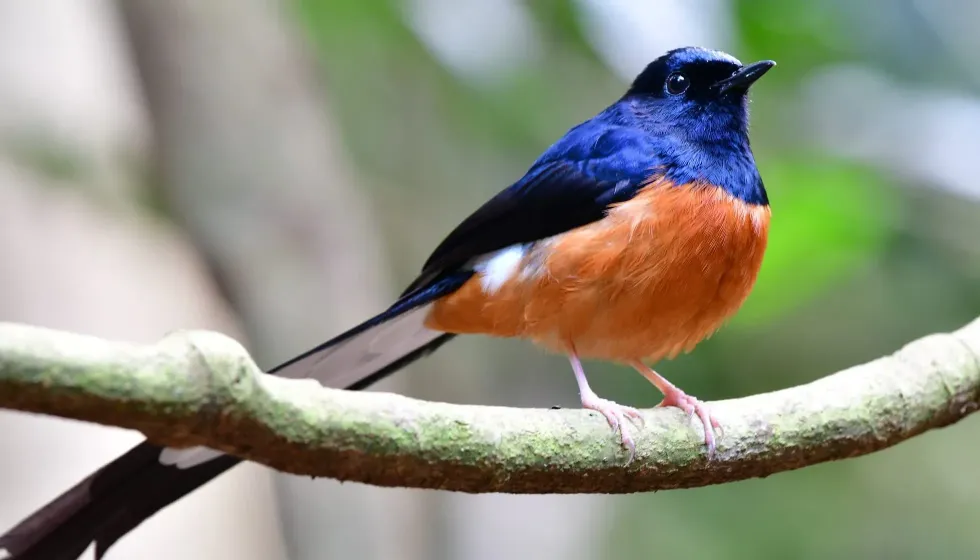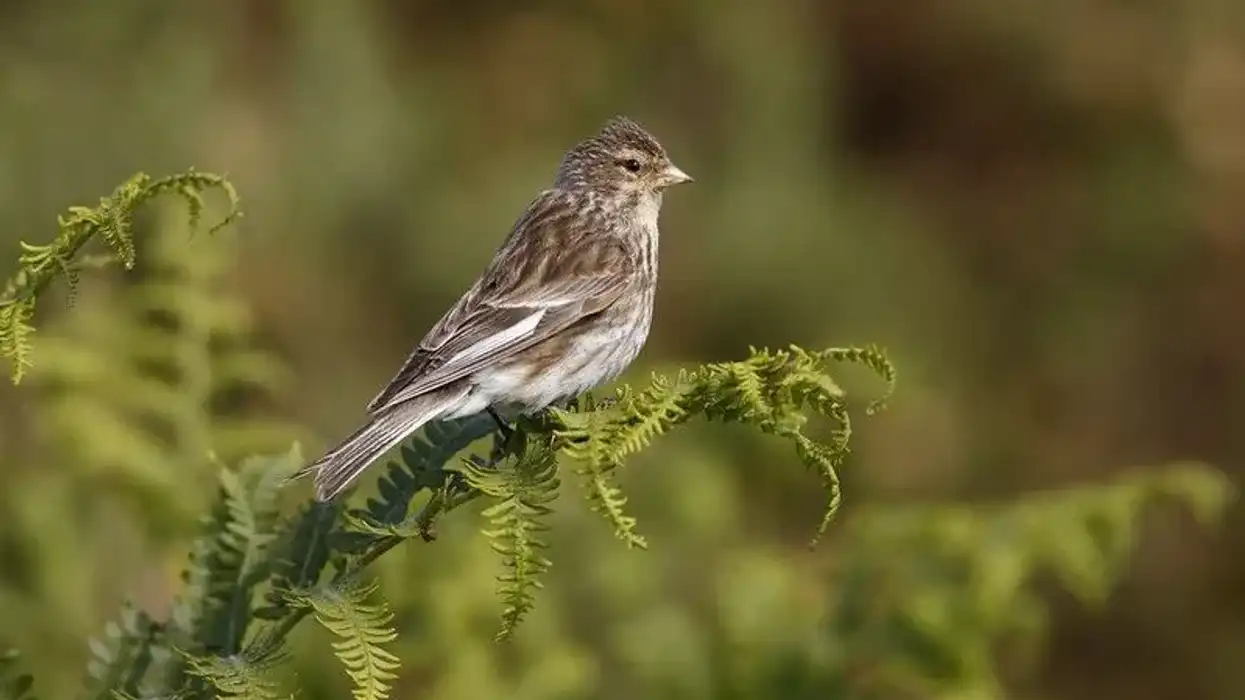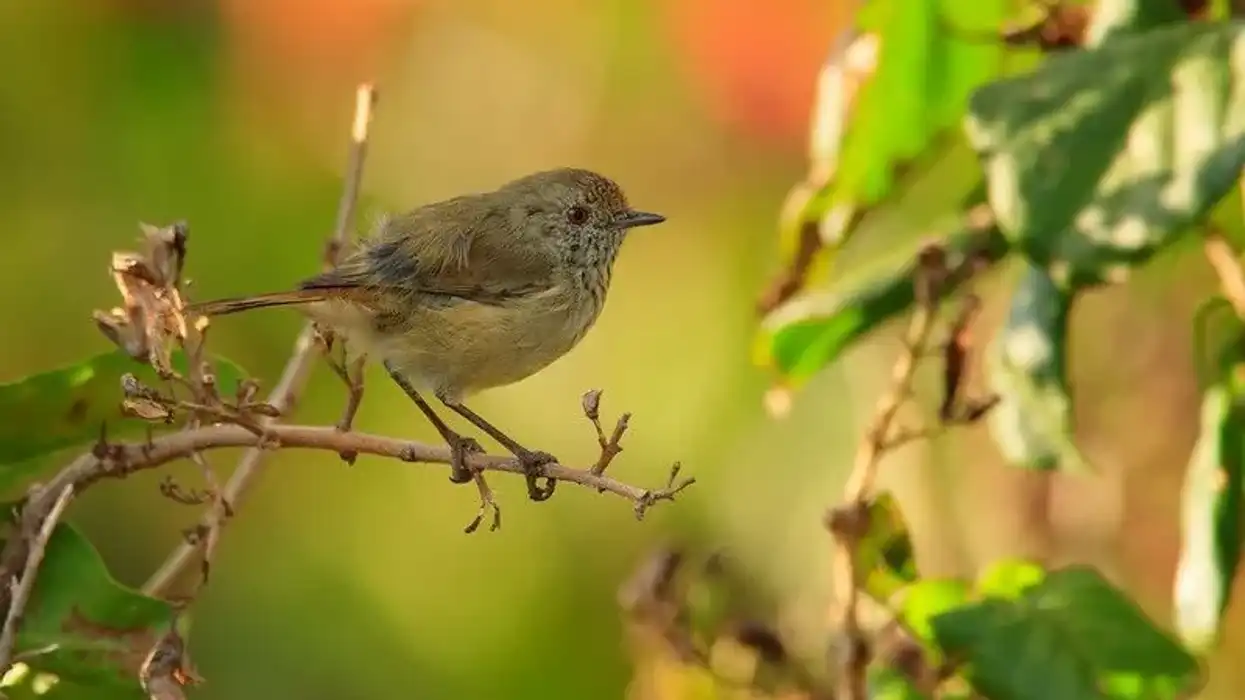Shama thrush is a species of a small passerine bird and there is a history behind the name of this species. This bird, white-rumped shama (Copsychus malabaricus) was earlier classified as a member of the thrush family Turdidae. The bird was commonly known as a white-rumped shama thrush or a shama thrush.
However, the family was later changed to Muscicapidae. This family includes 324 different species of birds. The family Muscicapidae contains passerine birds restricted to the Old World.
Native to the dense forests of Southern and Southeast Asia including India, these birds have also been introduced to the islands of Hawaii. Popularity of these birds is due to the white-rumped shama thrush song, however, this bird also has an unmatched beauty.
The sound of a shama thrush is rich, melodious, and often mimics other birds. This songbird is known to feed mostly on insects and is a hardcore insectivore in the wild.
However, in captivity, these birds are known to feed on many different things ranging from raw meat to egg yolks. Popularity as a cage-bird and a songbird has means this bird has been introduced to many parts of the world.
For more relatable content, check out these hummingbird facts and cockatoo fun facts for kids.
Shama Thrush Interesting Facts
What type of animal is a shama thrush?
The white-rumped shama thrush is a songbird and a member of the Muscicapidae family, also known as an Old World flycatcher. These flycatchers have a different family now called Tyrannidae.
What class of animal does a shama thrush belong to?
White-rumped shama (Copsychus malabaricus) falls under the class of Aves in the kingdom of Animalia.
How many shama thrushes are there in the world?
The population of white-rumped shamas, commonly known as shama thrush, is not known. However, these bird have been categorized as Least Concern, so there is no immediate threat to this species currently.
Where does a shama thrush live?
A white-rumped shama bird is native to Southeast Asia and the Indian subcontinent. From Asia, this species was then introduced to the islands of Hawaii due to the bird's ever-growing popularity.
The species was introduced to Oahu in 1940, Kauai in 1931, and Maui in the 1900s to add to the native fauna in the region. In Hawaii, this species is also common in the valley forests and ridges of southern Ko'olaus.
The white-rumped shama is indigenous to India, some Indonesian islands, and Southeast Asia. The song-bird has also been introduced to Taiwan where it acts as an invasive species, acting aggressive towards the native birds of the region and feeding on insects.
What is a shama thrush's habitat?
Found in the scrub and secondary forests of Asia, the Asian habitat includes dense undergrowth such as bamboo forests. Hawaiian habitats include valley forests and this bird is also found nesting in undergrowth or in low trees of lowland broadleaf forests.
The Hawaiian shama thrush unlike the white-rumped shama of other regions nests in dense undergrowth or low-bearing trees. The territories are quite different.
Who do shama thrushes live with?
The white-rumped shama is a very shy and highly territorial bird species. It is often found solitary or in pairs during mating season.
How long does a shama thrush live?
The lifespan of shama thrush is usually seven years.
How do they reproduce?
Common shama thrush males try to court females by making shrill calls and fanning their tail feathers. Both sexes take part in rising and falling flight maneuvers and if the male fails to comply, the female shows aggression by opening her mouth.
The nest is made of roots, leaves, ferns, and stems by the female and the male protects the area. Both sexes are active members as parents.
A clutch of four to five eggs is laid by the female. The bird breeds from January to September, but mainly between April and June. Shama thrush eggs hatch time takes between 12-15 days after incubating.
Eggs have variable shades of brown blotching in a white to light aqua body. Both parents feed the young, but the female incubates the eggs alone.
In the wild, these birds are known for breeding twice per season, however, in captivity, it can be up to five times.
Their territories include a male and female during the breeding season. The male species are known for defending the territory. Male and female species have different territories too when not breeding.
What is their conservation status?
The conservation status of the white-rumped shama (Copsychus malabaricus) is categorized as Least Concern by the IUCN Red List.
The popularity of the white-rumped shama of the family Muscicapidae has made them a familiar bird in cages in many parts of the world.
Shama Thrush Fun Facts
What do shama thrushes look like?
The males of this species are a glossy black in color. They have a chestnut belly and white feathers on the rump and outer tail. A female shama bird is more gray-brown in color. Both males and females have pink-colored feet and black bills.
A common shama thrush male is brighter in color than the female. The male is also a tad longer than the female. A juvenile shama thrush has more of a grayish or brownish coloration with a spotted chest. The young bird resembles the females.
How cute are they?
They are vibrant and colorful and are considered quite cute. The songs and the versatility of the bird have made them quite a popular cage-bird.
How do they communicate?
Communication is established by the shama thrush bird call. The rich and melodious voice of the bird that often mimics other birds is quite loud and clear. The bird makes a 'tck' sound while foraging.
How big is a shama thrush?
These birds are no longer considered a part of the thrush family, however white-rumped shama birds have a length with a range of 9-11 in (22.86-27.94 cm).
In comparison, the hermit thrush found in North and Central America is a little smaller than the shama thrush, with a length of 5.9-7.1 in (15-18 cm).
How fast can a shama thrush fly?
The speed of this bird is not known. However, its long tail helps it to change direction quickly in the dense undergrowth in the wild.
How much does a shama thrush weigh?
The weight of this bird is 0.06-0.07 lb (27.2-31.7 g).
The least flycatcher is the smallest of the genus Empidonax in the family Tyrannidae. It is a small insect-eating bird weighing only 0.017-0.028 lb (7.7-12.7 g).
What are the male and female names of the species?
Males and females are not given different names.
What would you call a baby shama thrush?
A baby of a common shama thrush is called young or juvenile.
What do they eat?
The white-rumped shama thrush diet includes insects in the wild, along with worms and fruits.
In captivity, the bird can be fed cut fruits and gut-loaded insects such as crickets and mealworms, added with chopped hard-boiled eggs. Egg yolk and meat can also be added with boiled, dried legumes.
Are they poisonous?
They are not poisonous.
Would they make a good pet?
The white-rumped shama is a popular bird species and used extensively as a pet. Shama thrushes are known to escape from their cages and they have established themselves as popular songbirds in the regions.
In captivity, shama tail feathers do not reach the required length that is found in their native habitat. The length of the tail and the quality of the tail feathers are all dependent on various stress factors during the molt. These factors should be kept in mind while breeding the birds to show off their magnificent long tails.
Did you know...
The white-rumped shama (Copsychus malabaricus) of South Asia and Southeast Asia was earlier a part of the thrush family.
The white-rumped shama is known to lay a clutch of four to five eggs from April to June during the breeding season.
To mix with the diversity, this bird has been brought to the islands of Hawaii in the 1900s.
Is there a difference between a male and female shama thrush?
Males are more brightly colored than females. Females are also shorter than males. Males also show complex social behavior while singing the song.
How did shama thrushes get their name?
The white-rumped shama bird was earlier a member of the family of Turdidae. This family contains all types of thrushes.
The bird was known by the name white-rumped shama thrush or shama thrush then which is how the name shama thrush came into being. However, this bird native to Southeast Asia and the Indian subcontinent was later put in the family of Muscicapidae, also known as Old World flycatcher.
Here at Kidadl, we have carefully created lots of interesting family-friendly animal facts for everyone to discover! For more relatable content, check out these palm warbler facts and blue jay fun facts for kids.
You can even occupy yourself at home by coloring in one of our free printable shama thrush coloring pages.










